 |
 |
 |
| |
Higher Mortality With vs Without HIV After Acute Coronary, But Not With High CD4s
|
| |
| |
IDWeek, October 2-6, 2013, San Francisco
"No mortality difference at 3 years for HIV+ ACS patients with
CD4≥500 compared with HIV- patients.....The observed higher mortality after an ACS hospitalization
for HIV patients appears to be driven by HIV-related factors, including low CD4 and lack of ART use......"these results strengthen recommendations for earlier initiation of ART"
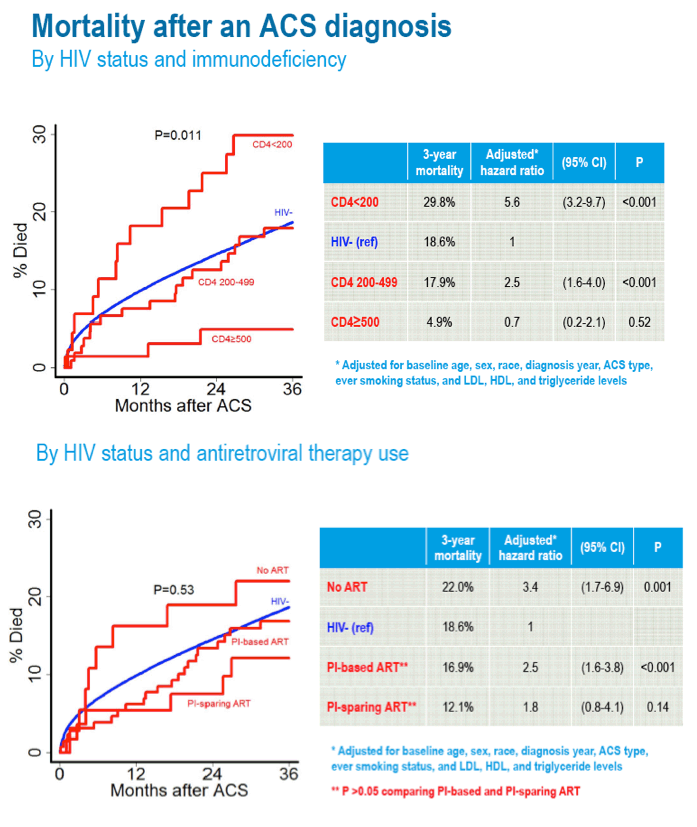
Mark Mascolini
Compared with HIV-negative people admitted to the hospital with a first acute coronary syndrome (ACS) diagnosis, HIV-positive people with an ACS admission had more than a doubled risk of death 1 and 3 years later [1]. But among HIV-positive people with a CD4 count above 500, that heightened death risk vanished.
People with HIV run a higher risk of acute myocardial infarction (MI) and ACS than people the same age in the general population. Chronic inflammation, immunodeficiency, protease inhibitor (PI) therapy, and higher smoking rates among people with HIV may contribute to their higher ACS risk. But little is known about mortality after ACS in people with HIV compared with HIV-negative people.
To address these issues, researchers with Kaiser Permanente Northern California compared all-cause mortality in people with and without HIV admitted to the hospital with a first ACS diagnosis from 1996 through 2010. They defined ACS as (1) ST-segment elevation MI (STEMI), (2) MI without ST-segment elevation (NSTEMI), or (3) unstable angina.
The analysis included 226 people with HIV and 86,321 without HIV. Baseline age was significantly younger in the HIV group (54.3 versus 66.8, P < 0.001), which included a significantly higher proportion of men (94.3% versus 63.0%, P < 0.001) and a higher proportion diagnosed with ACS in 2004-2010 (51.3% versus 42.5%) than in 1996-2003 (48.7% versus 57.5%) (P = 0.008). Compared with the HIV-negative group, HIV-positive people were significantly more likely to have STEMI ACS (36.7% versus 24.8%) and less likely to have unstable angina (29.7% versus 41.8%) (P < 0.001). The HIV group included significantly higher proportions with high-density lipoprotein cholesterol below 40 mg/dL (P < 0.001) and triglycerides at or above 150 mg/dL (P < 0.001). A significantly higher proportion of people with HIV had ever smoked (69.9% versus 55.2%, P < 0.001).
Among people with HIV, most (58%) were taking PI-based antiretroviral therapy, 25.7% were taking a non-PI regimen, and 16.4% were not taking antiretrovirals. About one third of people with HIV had a CD4 count above 499, almost half had a count between 200 and 499, and the rest had a count under 200.
Unadjusted analysis determined that 1-year all-cause mortality after admission for ACS was similar with and without HIV (7.6% and 9.8%, P = 0.26), as were 3-year death rates (16.6% and 18.6%, P = 0.43). But after statistical adjustment for baseline age, gender, race, diagnosis year, ACS type, ever-smoking status, and lipid levels, HIV infection was associated with more than a twice-higher 1-year risk of death (adjusted hazard ratio [aHR] 2.2, 95% confidence interval 1.3 to 3.5, P = 0.001), and the 3-year risk with HIV was higher still (aHR 2.5, 95% CI 1.8 to 3.5, P < 0.001).
The Kaiser Permanente team determined 3-year death rates of 29.8% in HIV-positive ACS patients with a CD4 count under 200, 17.9% in people with 200 to 499 CD4s, 4.9% in HIV-positive people with 500 or more CD4s, and 18.6% in the HIV-negative comparison group. Statistical adjustment for the variables listed in the previous paragraph indicated that HIV-positive people with a sub-200 CD4 count had more than a 5 times higher 3-year death risk than the HIV-negative group (aHR 5.6, 95% CI 3.2 to 9.7, P < 0.001), while people with 200 to 499 CD4s had a 2.5 times higher death risk (95% CI 1.6 to 4.0, P < 0.001). HIV-positive people with 500 or more CD4s did not have a higher 3-year death risk than the HIV-negative group (aHR 0.7, 95% CI 0.2 to 2.1, P = 0.52).
In the same type of statistical analysis, not taking antiretrovirals more than tripled the 3-year all-cause death risk compared with the HIV-negative group (aHR 3.4, 95% CI 1.7 to 6.9, P = 0.001) and taking a PI-based regimen more than doubled the risk (aHR 2.5, 95% CI 1.6 to 3.8, P < 0.001). But death risk did not differ significantly between people taking a non-PI regimen and the HIV-negative comparison group (aHR 1.8, 95% CI 0.8 to 4.1, P = 0.14).
The researchers stressed that HIV-positive people not taking antiretroviral therapy had the highest 3-year mortality after ACS (22%) in the treatment-based comparison, while 3-year mortality did not differ between HIV-positive people with at least 500 CD4s and HIV-negative people. The investigators suggested their findings "strengthen recommendations for earlier initiation of ART."
Reference
1. Silverberg M, Hurley L, Prasad A, et al. Mortality following hospitalization for acute coronary syndrome among HIV+ and HIV- patients. IDWeek 2013. October 2-6, 2013. San Francisco. Abstract 75.
r 2-6, 2013. San Francisco. Abstract 75.
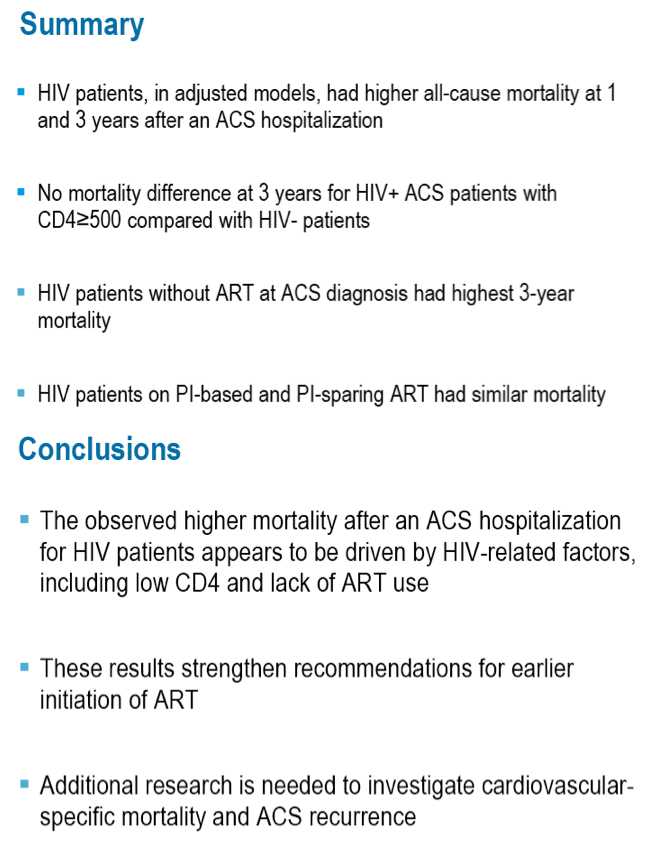
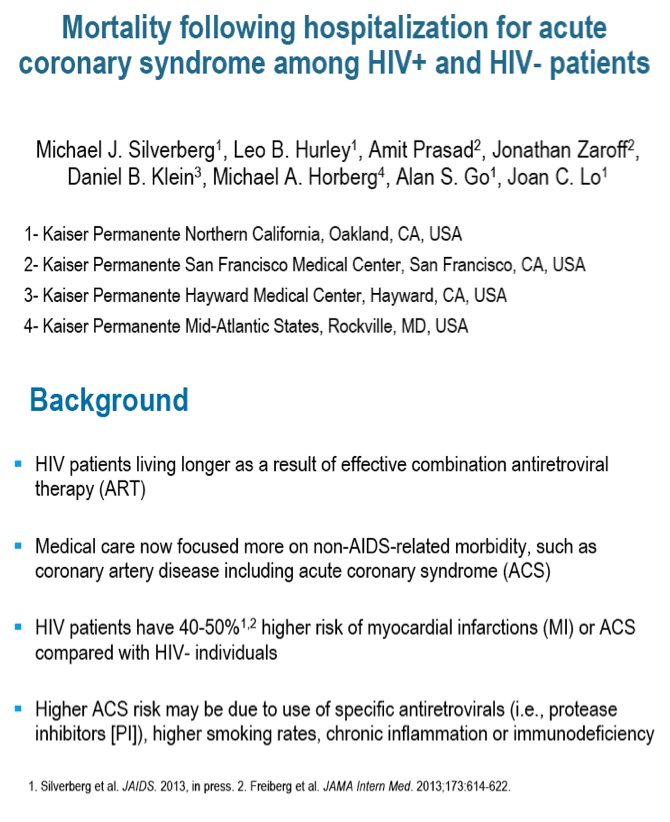
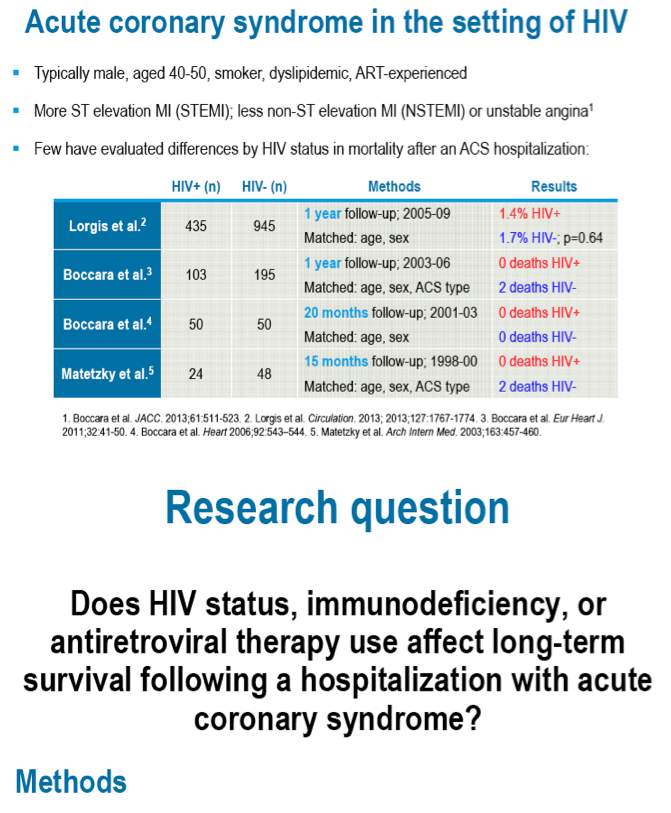

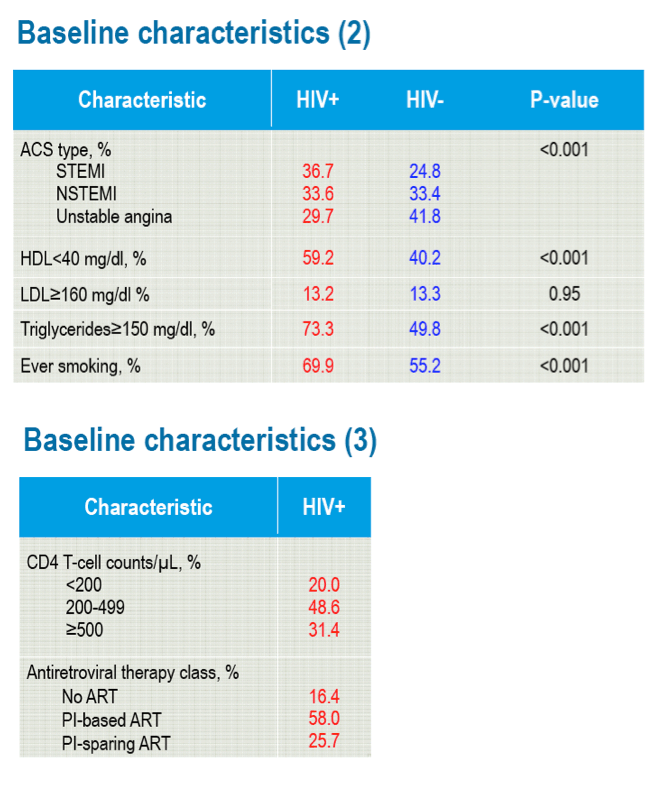
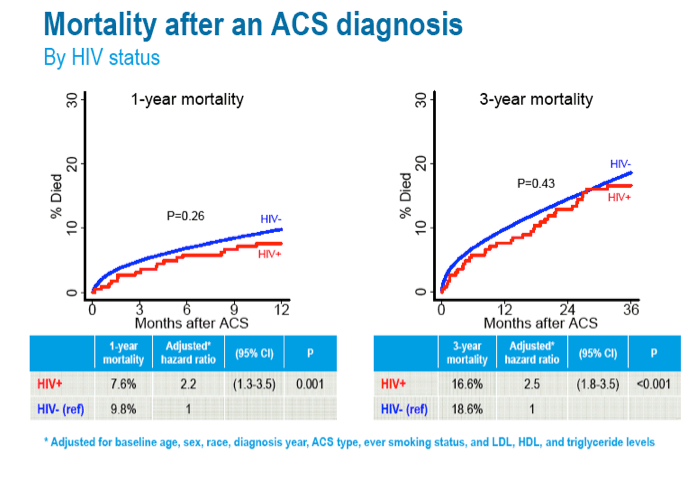
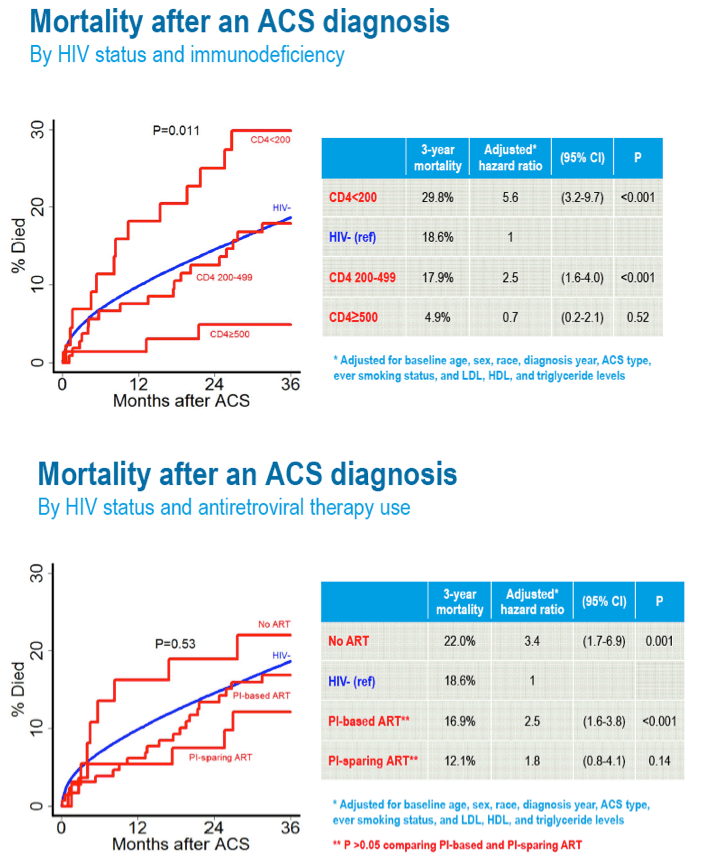
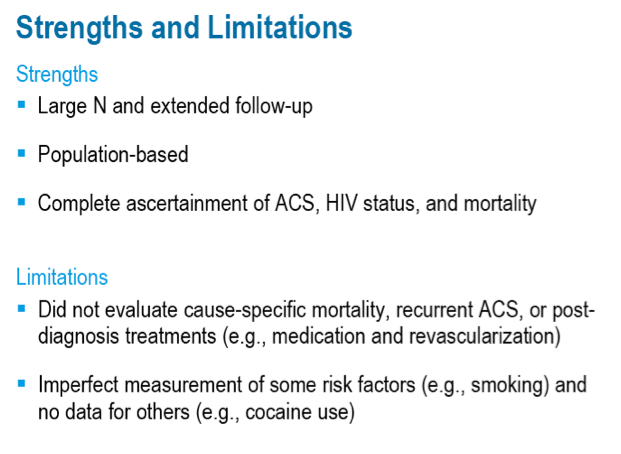
|
| |
|
 |
 |
|
|